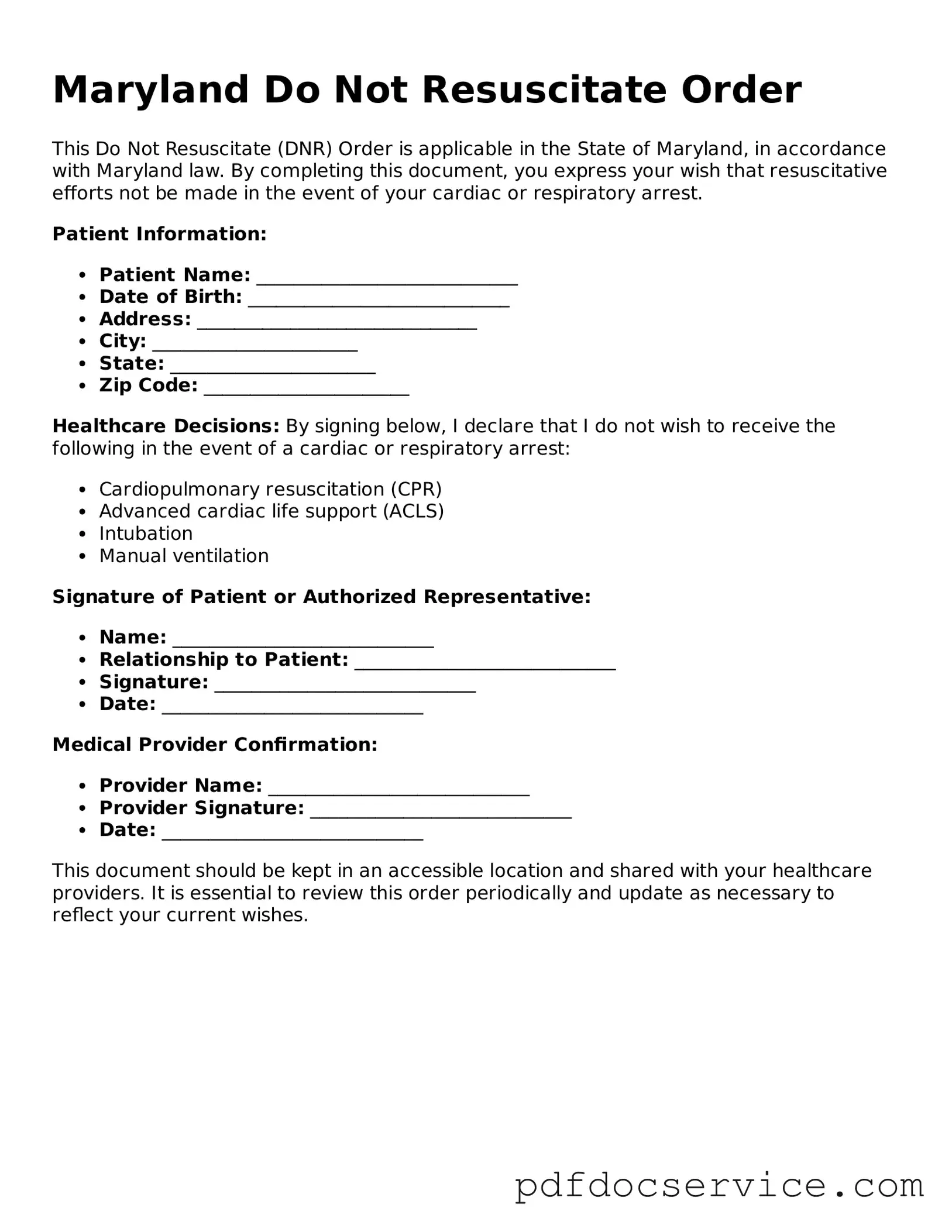What is a Do Not Resuscitate (DNR) Order in Maryland?
A Do Not Resuscitate Order (DNR) is a legal document that allows a person to refuse certain life-saving medical interventions, such as cardiopulmonary resuscitation (CPR), in the event of cardiac arrest. In Maryland, this order is designed to respect an individual’s wishes regarding end-of-life care.
Who can create a DNR Order in Maryland?
Any adult who is capable of making their own medical decisions can create a DNR order. Additionally, a parent or legal guardian can create a DNR order for a minor. It's essential that the individual understands the implications of the order and is making the decision voluntarily.
You can obtain a DNR Order form from various sources, including:
-
Your healthcare provider or physician.
-
The Maryland Department of Health website.
-
Local hospitals or healthcare facilities.
Once you have the form, it must be completed and signed by you and your physician.
The DNR Order form typically requires the following information:
-
Your full name and date of birth.
-
Your physician's name and contact information.
-
A statement indicating your desire for a DNR order.
-
Signatures of both you and your physician.
Is a DNR Order valid in all healthcare settings?
Yes, a properly executed DNR Order is valid in all healthcare settings in Maryland, including hospitals, nursing homes, and emergency medical services. However, it is crucial to ensure that the order is readily available and accessible to healthcare providers when needed.
Can a DNR Order be revoked?
Yes, you can revoke a DNR Order at any time. To do this, you should inform your healthcare provider and any family members involved in your care. It’s also a good idea to destroy any copies of the DNR Order to prevent confusion.
What happens if I don’t have a DNR Order?
If you do not have a DNR Order in place and experience cardiac arrest or another life-threatening situation, medical personnel are required to perform resuscitation efforts. This may include CPR, intubation, and other life-saving measures, even if you would prefer not to have them.
Can family members override a DNR Order?
Generally, family members cannot override a valid DNR Order. The order reflects the wishes of the individual who signed it. However, in some cases, family members may express concerns or request a review of the order with the healthcare team. It’s essential to have open communication about these wishes to ensure everyone is on the same page.
